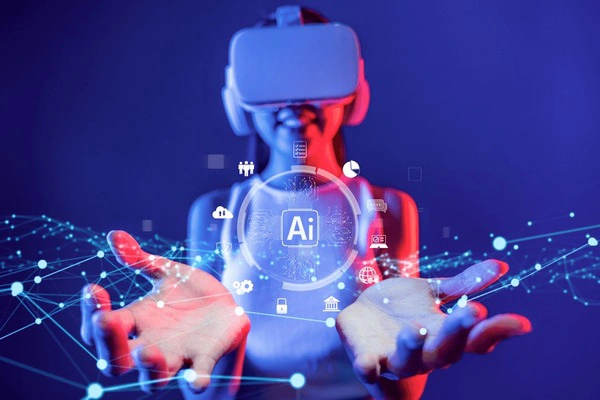
AI and the Future of Virtual Reality Experiences
Artificial intelligence is transforming virtual reality by using advanced 3D modeling and simulation techniques to create immersive and interactive experiences. This innovation helps make virtual worlds more lifelike and engaging, opening up new possibilities for entertainment, education, and beyond.
Jackson Mitchell
29/11/2024 - 5 months ago

The Basics of Virtual Reality Content
Virtual reality (VR) is a technology that allows users to experience digital environments as if they were real. By wearing VR headsets, people can explore virtual worlds in 360 degrees, making them feel as though they are part of the scene. The experiences range from gaming to educational simulations, and the technology has been around for a few decades but has seen significant advancements recently.
AI plays a crucial role in enhancing VR by creating detailed and interactive environments. By using AI algorithms, developers can design complex 3D models that simulate real-world scenarios. This makes the virtual worlds more realistic and engaging, providing users with an experience that feels more authentic than traditional digital content.
The generation of VR content involves several components, including 3D modeling, texture mapping, and simulation. AI helps streamline these processes by automating the creation of intricate details that might be too time-consuming or complex for humans to handle manually. This automation capability significantly reduces the time and cost involved in producing high-quality VR experiences.
How AI Enhances Immersion
Immersion in VR is all about making the user feel as though they are genuinely present in the virtual environment. AI enhances this immersion by utilizing machine learning techniques to anticipate and adapt to user actions. For instance, AI can adjust the environment based on where a user looks or moves, ensuring a seamless and dynamic experience.
Another way AI contributes is through natural language processing, allowing users to interact with virtual characters in a more lifelike manner. These characters can respond to voice commands and engage in conversations, making the virtual world feel more alive. This level of interaction was previously unattainable with standard programming techniques.
Moreover, AI-driven VR can personalize experiences by analyzing user preferences and behaviors. Algorithms can recommend specific environments or adjust difficulty levels in games, tailoring the experience to fit individual users. This personalization not only enhances user satisfaction but also increases the time they spend engaged with VR content.
Applications of AI-Generated VR Content
The applications of AI-generated VR content are vast and varied, impacting numerous fields beyond gaming. In education, VR can create immersive learning environments that make complex subjects more accessible. Students can explore historical sites or conduct virtual science experiments, enhancing their understanding and retention of information.
In the healthcare sector, VR is used for training medical professionals by simulating surgeries or patient interactions. This hands-on experience is invaluable for building skills without the risks associated with real-life practice. AI further enhances these simulations by introducing realistic scenarios and patient responses.
Entertainment is another area where AI-generated VR content shines. From virtual concerts to interactive storytelling, these experiences redefine how audiences engage with media. AI allows for more complex narratives and dynamic environments, making entertainment more immersive than ever before.
Challenges and Ethical Considerations
Despite the exciting possibilities, there are challenges and ethical considerations in AI-generated VR content. One major concern is privacy, as these technologies often require collecting and analyzing user data to function effectively. Ensuring that this data is used responsibly and securely is paramount to maintaining user trust.
Additionally, the realism of AI-generated virtual environments raises questions about the blurring of lines between reality and fiction. Users could become overly immersed, leading to potential psychological impacts. It's essential to establish guidelines for healthy usage and provide users with clear boundaries.
Finally, as AI and VR technologies continue to evolve, ensuring accessibility for all individuals is crucial. Developers must consider how to make these experiences available to people with disabilities, ensuring that everyone can benefit from technological advancements. Addressing these challenges will be key to the responsible development of AI-generated VR content.


















